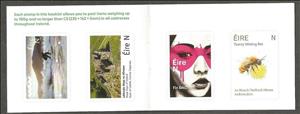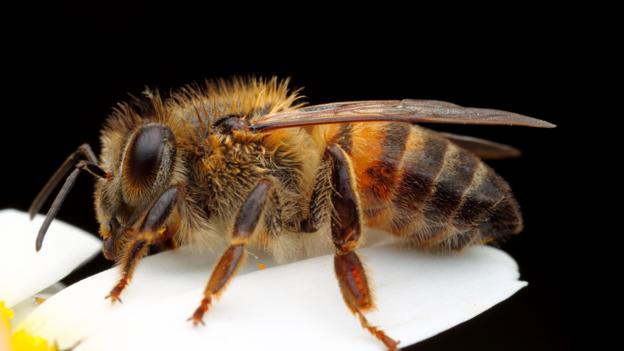Booklet: Advantage Card National Rate Booklet (Ireland 2019)
Advantage Card National Rate Booklet (Ireland 2019)
15 April (Ireland ) within release Advantage Card Booklet Stamps goes into circulation Booklet Advantage Card National Rate Booklet face value 4*N No Face Value
| Booklet Advantage Card National Rate Booklet in catalogues | |
|---|---|
| Yvert et Tellier: | Yt: IE C2284 |
| Stanley Gibbons: | Sg: IE SB205 |
Booklet is square format.
Produced for business use in April 2019 and sold only in bulk at first, placed on sale as individual booklets by An Post early July 2019. Sold at face value of €4.00 Contains four commemorative stamps in new self-adhesive format for these designs.Also in the issue Advantage Card Booklet Stamps:
- Stamp - Urban Street Art - Fin DAC face value N;
- Stamp - Boyne Viaduct, Drogheda Co. face value W;
- Stamp - View of Ben Bulben, County Sligo face value W;
- Stamp - Centenary of Sinking of RMS Leinster face value W;
- Booklet - Advantage Card International Booklet face value 4*W;
- Stamp - Art of Sir Alfred Chester Beatty face value W;
- Stamp - Rock of Cashel, County Tipperary face value N;
- Stamp - Tawny Mining Bee face value N;
- Stamp - Surfing at Inch Strand face value N;
- Booklet - Advantage Card National Rate Booklet face value 4*N;
Booklet Advantage Card National Rate Booklet it reflects the thematic directions:
Art is a diverse range of human activities in creating visual, auditory or performing artifacts (artworks), expressing the author's imaginative or technical skill, intended to be appreciated for their beauty or emotional power. In their most general form these activities include the production of works of art, the criticism of art, the study of the history of art, and the aesthetic dissemination of art. The oldest documented forms of art are visual arts, which include creation of images or objects in fields including painting, sculpture, printmaking, photography, and other visual media. Architecture is often included as one of the visual arts; however, like the decorative arts, or advertising, it involves the creation of objects where the practical considerations of use are essential—in a way that they usually are not in a painting, for example. Music, theatre, film, dance, and other performing arts, as well as literature and other media such as interactive media, are included in a broader definition of art or the arts. Until the 17th century, art referred to any skill or mastery and was not differentiated from crafts or sciences. In modern usage after the 17th century, where aesthetic considerations are paramount, the fine arts are separated and distinguished from acquired skills in general, such as the decorative or applied arts.
Bees are winged insects closely related to wasps and ants, known for their roles in pollination and, in the case of the best-known bee species, the western honey bee, for producing honey. Bees are a monophyletic lineage within the superfamily Apoidea. They are currently considered a clade, called Anthophila. There are over 20,000 known species of bees in seven recognized biological families. Some species – including honey bees, bumblebees, and stingless bees – live socially in colonies while most species (>90%) – including mason bees, carpenter bees, leafcutter bees, and sweat bees – are solitary.
A castle (from Latin: castellum) is a type of fortified structure built in Europe and the Middle East during the Middle Ages by European nobility. Scholars debate the scope of the word castle, but usually consider it to be the private fortified residence of a lord or noble. This is distinct from a palace, which is not fortified; from a fortress, which was not always a residence for nobility; and from a fortified settlement, which was a public defence – though there are many similarities among these types of construction. Usage of the term has varied over time and has been applied to structures as diverse as hill forts and country houses. Over the approximately 900 years that castles were built, they took on a great many forms with many different features, although some, such as curtain walls and arrowslits, were commonplace.
A landscape is the visible features of an area of land, its landforms and how they integrate with natural or man-made features. A landscape includes the physical elements of geophysically defined landforms such as (ice-capped) mountains, hills, water bodies such as rivers, lakes, ponds and the sea, living elements of land cover including indigenous vegetation, human elements including different forms of land use, buildings and structures, and transitory elements such as lighting and weather conditions. Combining both their physical origins and the cultural overlay of human presence, often created over millennia, landscapes reflect a living synthesis of people and place that is vital to local and national identity. The character of a landscape helps define the self-image of the people who inhabit it and a sense of place that differentiates one region from other regions. It is the dynamic backdrop to people’s lives. Landscape can be as varied as farmland, a landscape park, or wilderness. The earth has a vast range of landscapes, including the icy landscapes of polar regions, mountainous landscapes, vast arid desert landscapes, islands and coastal landscapes, densely forested or wooded landscapes including past boreal forests and tropical rainforests, and agricultural landscapes of temperate and tropical regions.




